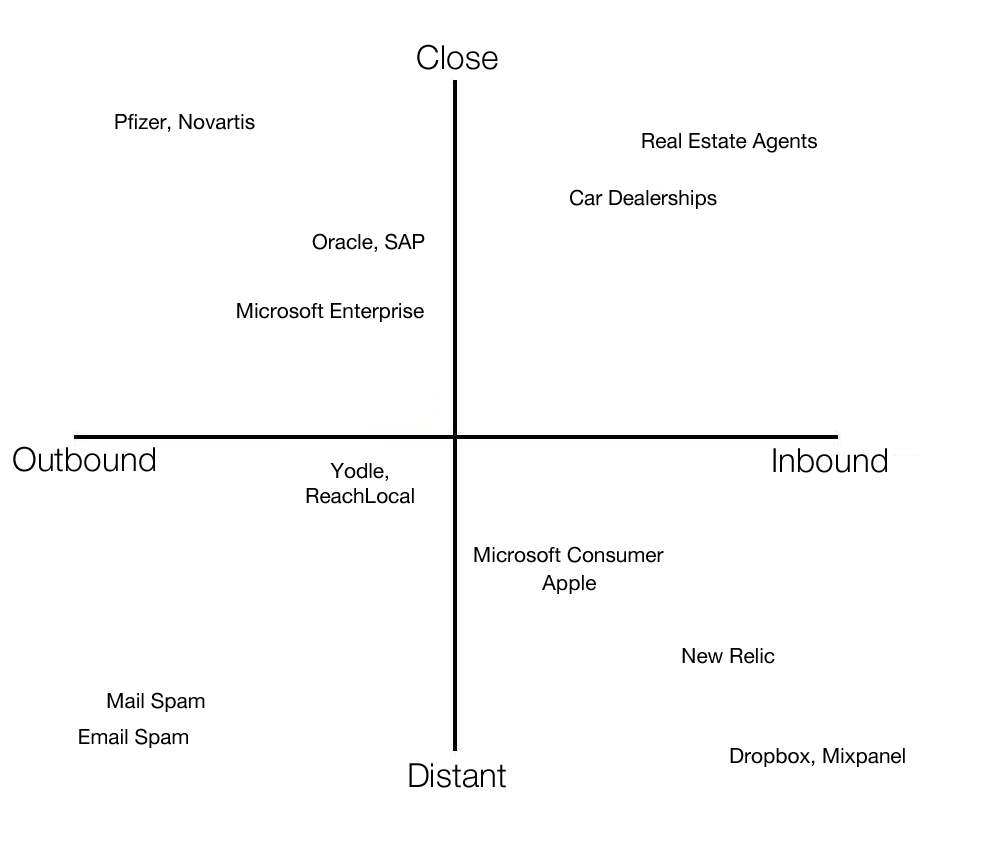Something I’ve been thinking about is the variety of sales approaches. On one extreme, you have pharmaceutical companies sending sales reps to visit doctors offices to try to get them to prescribe their drugs. On the other you have companies such as MixPanel and Dropbox which rely on a self serve approach. And in between you have companies such as NewRelic which offer a self-serve trial and try to upsell you with emails from a sales rep.
Depending on a product’s complexity and its cost structure your sales approach may be limited but it’s always worth seeing the other approaches available and if any of them may fit. It’s likely that an approach that didn’t work a year ago may work right now. A simple way to check is to look at newly launched competitors in your space and see how they’re acquiring customers.
After trying to come up with an exhaustive list of approaches I figured out it’s easier to just rank them across two dimensions:
- Proximity: This is both physical proximity as well as familiarity with your customer. It’s much easier to sell when you’re in the same room as them and know their story than when you’re sending out a generic email.
- Inbound vs outbound: A customer already having an interest in your product is much better than trying to interest him from scratch.
Here’s my attempt at coming up with matrix showing where different companies would lie based on their sales approach.

It’s possible to be profitable by being in any spot; a higher acquisition cost will just lead to a higher price. That’s why an Oracle installation can cost millions of dollars a year and why the enterprise Dropbox product is around $125/user/year. I believe that current trends favor businesses in the inbound/self-serve quadrant. This is due to people becoming more comfortable with technology as software gets better and easier to use and the ability for companies to offer free-trials with near-zero marginal cost. A corollary is that there’s an opportunity to compete with businesses outside the quadrant by creating simpler, cheaper versions of their product. The first version will suck compared to the existing products but as long as it’s cheaper and still solves a problem you should be able to get some customers and revenue (a la Lean Startup). Over time, you can continue to grow and keep on building our product until you’re competing with the existing companies (a la Innovator’s Dilemma).
